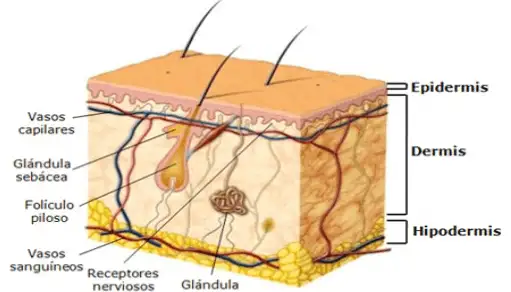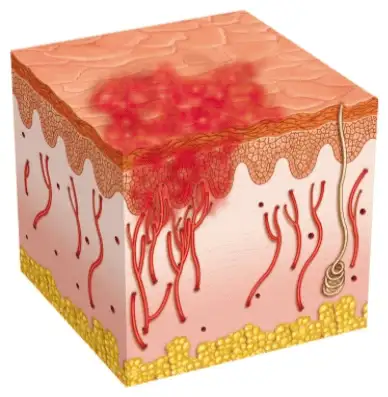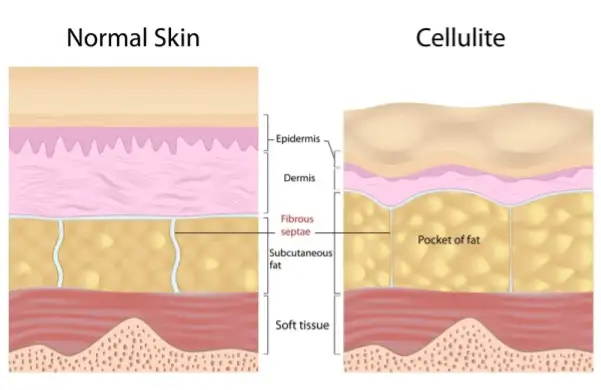 Reviewed by
Judith Haluka,
Judith has helped write or review several medical publications for us. Everything that she works on will clearly include Judith’s name.
Reviewed by
Judith Haluka,
Judith has helped write or review several medical publications for us. Everything that she works on will clearly include Judith’s name.
In this issue
- Terms and chart related to the skin
- Celulitis vs cellulitis and cellulite
Upcoming
- Developments for the web sites
- Health Care Spanish teaming with Learn with Echo for Spanish pronunciation tools
Learning on the go!
The goal of this newsletter is to provide you with enough information to be useful, but not more than can be learned within the busy schedule of a health care worker. You’ll find anatomy charts, additional vocabulary, occasional feedback from subscribers, and more! Feel free to read them now and save them for later use such as with a patient or as a study guide for coursework.
Anatomía de la piel humana — anatomy of the human skin
- Piel
- Vasos capilares
- Glándula sebácea
- Folículo piloso
- Vasos sanguíneos
- Receptores nerviosos
- Glándula sudorípara
- Epidermis
- Dermis
- Dermis
- Celulitis (skin infection)
- Celulitis o piel de naranja
- Skin
- Capillaries
- Sebaceous gland
- Pyloric follicle
- Blood vessels
- Nerve receptors
- Sweat glands
- Epidermis
- Dermis
- Hypodermis
- Cellulitis
- Cellulite (cosmetic)



Cellulitis & cellulite
“Cellulitis” is a word that’s composed of two terms. Celul- comes from the Latin: cellula (cell) while -itis is a Greek suffix that means inflammation.
Colloquially speaking, many Spanish speakers use the word “cellulitis” when talking about the irregular aspect that the skin takes when we have fat accumulation. However, when the skin does take this irregular aspect, also known as orange skin, what is happening is a sectored fatty subcutaneous tissue atrophy, it is ending modifying other structures sublayers skin and not a bacterial cell infection. The reason for this is that in English, there’s a specific word to talk about this problem but in Spanish, there isn’t one.
In English we have the word “cellulitis” as well as the word “cellulite”. In English, “cellulitis” is the inflammation of the cell while “cellulite” is the muscular atrophy of the skin. In Spanish however, we use the word “celulitis” to talk about the inflammation of the cell (which would be the correct use of the word, etymologically speaking) as well as the muscular atrophy of the skin. As a result, it is extremely important that we are very careful when we’re talking/treating Spanish-speaking patients.
The muscular atrophy of the skin (“cellulite”) can be the result of multiple causes (genetic factors, gender, age, stress level, daily diet, skin type, fat quantity, among others) but none of them involve a bacterial inflammation. On the other hand, the cellular inflammation of the skin (“cellulitis”) is caused by a bacterial infection on the skin.
Staphylococcus and Streptococcus are the two most common types of bacteria responsible for cellulitis. The symptoms and signs that might suggest a cellulitis is happening are: redness, tenderness, swelling and warmth of the infected area.
Neither cellulite nor cellulitis are contagious. Cellulite is treated with exercise while cellulitis is treated with antibiotics.
Celulitis: una palabra, dos significados
La palabra “celulitis” es una palabra compuesta. Celul- viene del latín: cellula (célula) mientras que -itis es un sufijo griego que significa inflamación.
Coloquialmente hablando, muchos hispano-hablantes utilizan la palabra “celulitis” para referirse al aspecto irregular que toma la piel cuando tenemos acumulación de grasas. Sin embargo, cuando la piel toma este aspecto irregular, también conocido como piel de naranja, en realidad lo que esta sucediendo es una atrofia sectorizada del tejido subcutáneo graso, que termina modificando la estructuras de las demás subcapas de la piel y, no una infección celular bacteriana. Y es que, aunque en inglés existe una palabra específica para referirse a este problema, en español no la hay.
En inglés tenemos la palabra “cellulitis” pero también tenemos la palabra “cellulite”. En inglés “cellulitis” es una infección de la piel mientras que “cellulite” es la alteración cosmética de la piel. No obstante, en español utilizamos la palabra “celulitis” para referirnos tanto a la inflamación de la célula (que sería el uso correcto de la palabra, etimológicamente hablando) como para la atrofia muscular de la piel. Es por ello que es sumamente importante el tener mucho cuidado cuando hablamos/tratamos pacientes hispanos.
La atrofia muscular de la piel (“cellulite”) puede ser el resultado de múltiples causas (factores genéticos, sexo, edad, nivel de estrés, dieta diaria, tipo de piel, cantidad de grasa, entre otras) pero ninguna de ellas envuelve la inflamación bacteriana. Sin embargo, la inflamación celular (“celulitis”) si es producida por una infección bacteriana en la piel.
El estafilococo y el Estreptococo comúnmente son los dos tipos de bacteria responsables de la celulitis. Los síntomas y señales indicativos de que una celulitis esta tomando lugar son: enrojecimiento de la piel, sensibilidad en el área, hinchazón y calentón del lugar afectado.
La celulitis no es contagiosa. La atrofia muscular de la piel es tratada con ejercicio mientras que la inflamación bacteriana de la piel es tratada con antibióticos.

Download this sheet as a PDF
For quick reference in the ward.
How we reviewed this article
Our experts continually monitor the medical science space, and we update our articles when new information becomes available.
-
Current versionMail the author of this page
- Feb 18, 2021
-
Copy edited by:
Copy editors - Feb 18, 2021
-
Copy edited by:
Copy editors
Word practice pages







Monitor technician
Learn healthcare spanish phrases used as a monitor technician in spanish.
Go to practice
Pharmacy technician
Learn healthcare spanish phrases used as a pharmacy technician in spanish.
Go to practiceHelp others by providing feedback
Part of Health Care Spanish’s mission is to create a useful resource for health care workers. However, there
is only so much that can be done without feedback from you. Email questions or suggestions to
support@PacificMedicalTraining.com
.
Tell us if there is a topic you want us to cover or a resource we can add to the site.